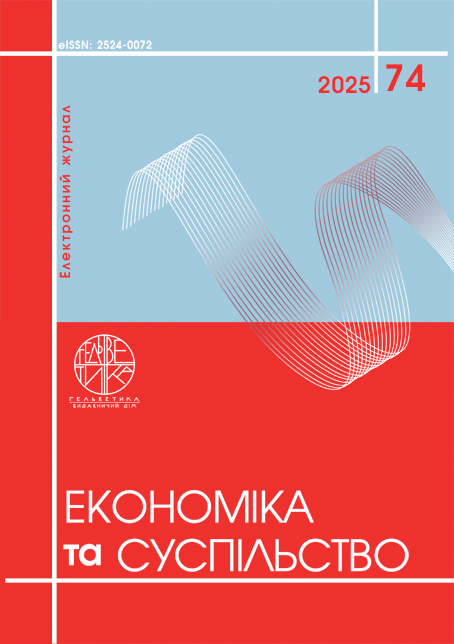APPLICATION OF THE CRITICAL PATH METHOD IN INTERNATIONAL IT PROJECTS
Abstract
The globalization of information technology and the rapid rise of remote, multicultural collaboration have exposed critical limitations in traditional project scheduling methods that assume homogeneous team behavior and static context. This study aims to overcome those limitations by embedding cultural sensitivity directly into the Critical Path Method (CPM), so that project schedules more accurately reflect the varied execution dynamics of international teams. Our methodology begins with a two-step transformation of cultural dimensions—Uncertainty Avoidance and Long-Term Orientation—into a single, symmetric correction factor. Raw index values are first normalized via min–max scaling and then mapped linearly into a predefined interval [–K, +K]. This cultural coefficient is multiplicatively applied to expert estimates of baseline activity durations, producing adjusted durations that encapsulate cultural risk tolerances and strategic time preferences. These adjusted values feed into modified forward and backward pass algorithms: earliest start and finish times are recalculated using the culture-corrected durations while preserving original network dependencies, and latest finish and start times are similarly updated to maintain schedule integrity. Results of conducted controlled simulation underscore the importance of continuous recalibration of task priorities and resources in multicultural contexts. The practical value of this enhancement is its seamless integration with existing scheduling tools: project managers can apply cultural coefficients through simple parameter inputs without modifying network logic. By quantifying cultural influences within CPM calculations, organizations gain a repeatable, transparent process for generating realistic timelines, proactively allocating resources, and mitigating deadline risks in complex international engagements. This work thus provides a rigorous, data-driven extension to classical scheduling methods, aligning theoretical project models with the nuanced realities of global teamwork.
References
McKinsey & Company. How virtual work is accelerating innovation [Електронний ресурс]. McKinsey & Company. URL: https://www.mckinsey.com/capabilities/operations/our-insights/how-virtual-work-is-accelerating-innovation (дата звернення: 10.05.2025)
Upwork Research Institute. Freelance Forward 2023: Future of Work Insights [Електронний ресурс]. Upwork. URL: https://www.upwork.com/research/freelance-forward-2023-research-report (дата звернення: 10.05.2025)
Bagshaw, K. B. (2021) NEW PERT and CPM in project management with practical examples. American Journal of Operations Research, vol. 11, no. 4, pp. 215–226. https://doi.org/10.4236/ajor.2021.114014
Arianie, G. P., & Puspitasari, N. B. (2020) Analysis of new production line project improvement through Critical Path Method (CPM), Design Structure Matrix (DSM) and Program Evaluation and Review Technique (PERT). Journal of Industrial Engineering & Management Research, vol. 1, no. 4, pp. 9–17. https://doi.org/10.11113/jierm.v1n4.78
Project Management Institute. (2009) The Global Project Management Framework [Рамковий документ]. Newtown Square, PA: Project Management Institute, 200 p.
Hofstede, G., Hofstede, G. J., & Minkov, M. (2010) Cultures and organizations: Software of the mind (3rd ed.) [Книга]. New York, NY: McGraw-Hill, 552 p.
Project Management Institute. (2017) A Guide to the Project Management Body of Knowledge (PMBOK® Guide) (6th ed.) [Стандарт]. Newtown Square, PA: Project Management Institute, 756 p.
PRINCE2 USA. (2024) Master cultural intelligence & time zone challenges [Практичний посібник]. PRINCE2 USA, 5 p.
Journal of Multiphysics Simulation Studies. (2020) Application of Critical Path Method (CPM) and Program Evaluation Review Technique (PERT). JMSS, vol. 19, no. 2, pp. 1–15.
Connaughton, S. L., & Shuffler, M. L. (2007) Multinational and multicultural distributed teams: A review and future agenda. Human Resource Development Review, vol. 6, no. 1, pp. 12–35. https://doi.org/10.1177/1534484307299696
Hofstede, G. (2011) Dimensionalizing cultures: The Hofstede model in context. Online Readings in Psychology and Culture, vol. 2, no. 1, Article 8. https://doi.org/10.9707/2307-0919.1014
Bond, M. H., & Hwang, K. K. (1986) The social psychology of Chinese people. In M. H. Bond (Ed.), The psychology of the Chinese people (pp. 129–174) [Anthology]. Oxford, UK: Oxford University Press.
McKinsey & Company. How virtual work is accelerating innovation. Available at: https://www.mckinsey.com/capabilities/operations/our-insights/how-virtual-work-is-accelerating-innovation (accessed May 10, 2025)
Upwork Research Institute. Freelance Forward 2023: Future of Work Insights. Available at: https://www.upwork.com/research/freelance-forward-2023-research-report (accessed May 10, 2025)
Bagshaw, K. B. (2021). NEW PERT and CPM in project management with practical examples. American Journal of Operations Research, 11(4), 215–226. https://doi.org/10.4236/ajor.2021.114014
Arianie, G. P., & Puspitasari, N. B. (2020). Analysis of new production line project improvement through Critical Path Method (CPM), Design Structure Matrix (DSM) and Program Evaluation and Review Technique (PERT). Journal of Industrial Engineering & Management Research, 1(4), 9–17. https://doi.org/10.11113/jierm.v1n4.78
Project Management Institute. (2009). The Global Project Management Framework. Newtown Square, PA: Project Management Institute.
Hofstede, G., Hofstede, G. J., & Minkov, M. (2010). Cultures and organizations: Software of the mind (3rd ed.). New York, NY: McGraw-Hill.
Project Management Institute. (2017). A Guide to the Project Management Body of Knowledge (PMBOK® Guide) (6th ed.). Newtown Square, PA: Project Management Institute.
PRINCE2 USA. (2024). Master cultural intelligence & time zone challenges. PRINCE2 USA.
Journal of Multiphysics Simulation Studies. (2020). Application of Critical Path Method (CPM) and Program Evaluation Review Technique (PERT). JMSS, 19(2), 1–15.
Connaughton, S. L., & Shuffler, M. L. (2007). Multinational and multicultural distributed teams: A review and future agenda. Human Resource Development Review, 6(1), 12–35. https://doi.org/10.1177/1534484307299696
Hofstede, G. (2011). Dimensionalizing cultures: The Hofstede model in context. Online Readings in Psychology and Culture, 2(1), Article 8. https://doi.org/10.9707/2307-0919.1014
Bond, M. H., & Hwang, K. K. (1986). The social psychology of Chinese people. In M. H. Bond (Ed.), The psychology of the Chinese people (pp. 129–174). Oxford, UK: Oxford University Press.

This work is licensed under a Creative Commons Attribution 4.0 International License.


